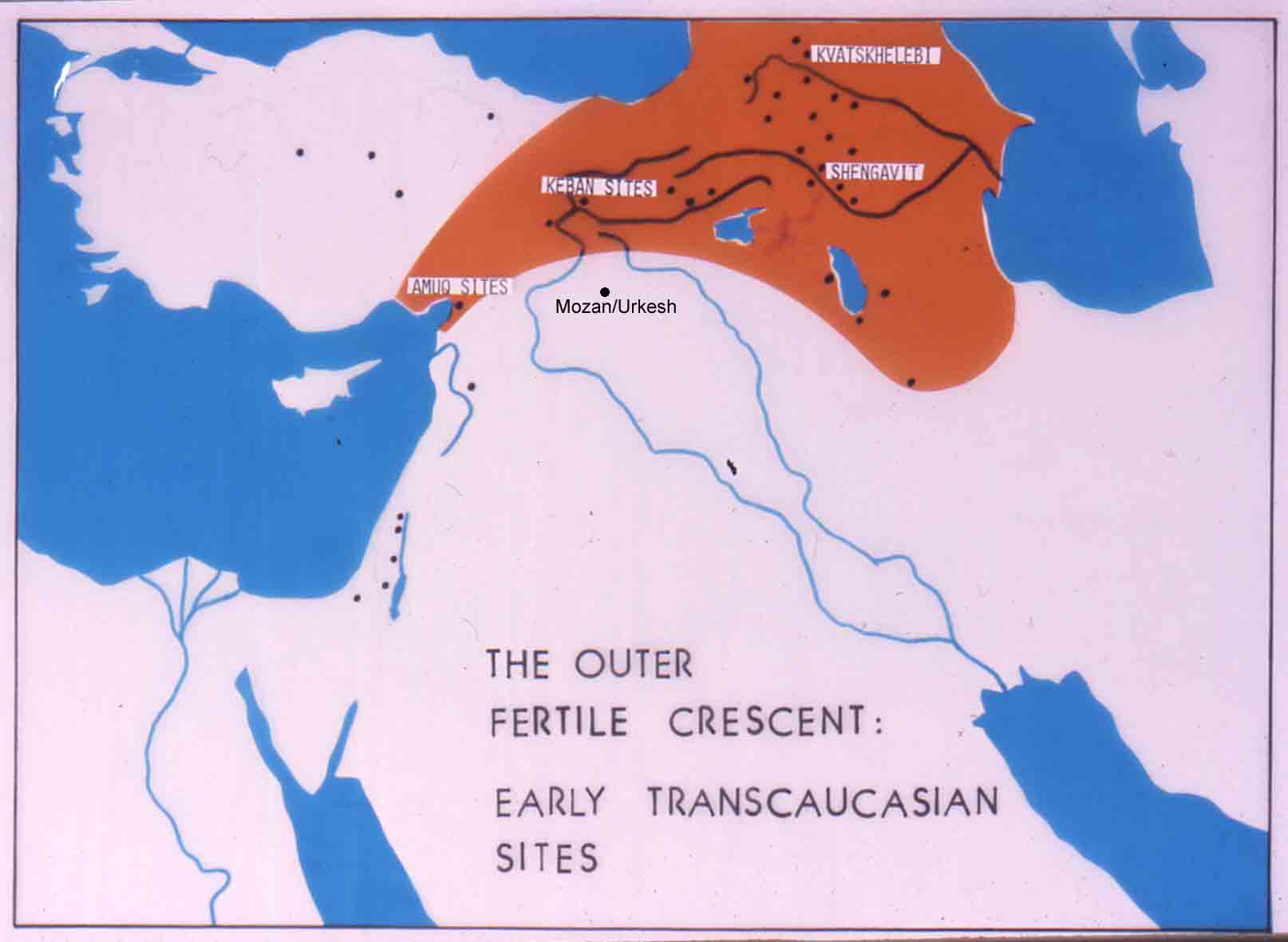
The conclusion we propose builds on the premises that we have been articulating in this article. (1) The archaeology of Mozan shows that we have there a city already by the middle of the fourth millennium, and we have every reason to believe that this city is indeed Urkesh from the beginning. (2) This city has clear and distinctive links with the north, which is its real hinterland, in terms of material culture, language and ideology. (3) Urkesh can be shown to have a specific ethnic affiliation with the Hurrians, and, we may also argue, the northern hinterland, as well.
This hinterland would obviously be coterminous with the earliest period of the city’s history, which is at least the fourth millennium. But it seems inescapable to assume that, in fact, the hinterland preceded the urban development of Urkesh – to assume, in other words, that we have Hurrians in the highlands to the north of Urkesh by at least the fifth millennium.
How far north this extended we have no way of knowing. But we have at least good reasons to see the southern part of the Tur-Abdin as an area where the Hurrians were at home since late prehistoric times. We cannot of course say that they are autochthonous in the sense that they did not replace any other population, in other words, that this is their original homeland. But if not, it is at least the southern bridgehead of this homeland, a bridgehead that was critical in the formation of new urban structures in the lowlands.
Urkesh and the Question of the Hurrian Homeland
Filed under: Uncategorized